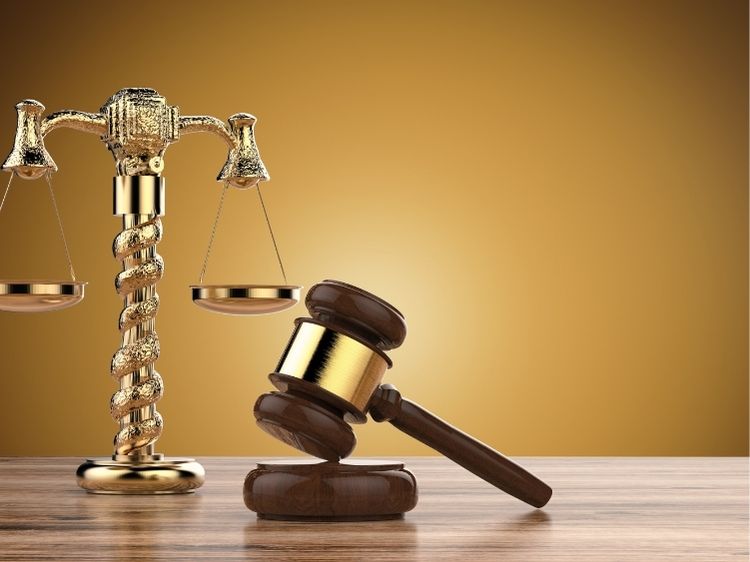When it comes to personal injury claims, products liability is a significant area of law that holds manufacturers, distributors, and retailers accountable for harm caused by defective products. One of the key legal concepts in this area is negligence. But what exactly does negligence in a products liability action mean, and how does it differ from other forms of liability? If you’re looking to understand the legal intricacies, you’ve come to the right place. This article will delve into the essentials of negligence in products liability, explaining what it entails, how it applies in the legal framework, and the important elements required to prove a claim.
What Is Negligence in Products Liability?
Negligence refers to a failure to exercise reasonable care in the design, manufacture, or distribution of a product that results in harm to a consumer. In the context of a products liability action, this means that a party involved in the production or sale of the product acted carelessly, and this carelessness directly led to an injury or damage.
In simpler terms, negligence happens when the responsible party (manufacturer, supplier, or seller) didn’t do what a reasonable person would do under similar circumstances, and their failure caused harm. For example, a manufacturer might fail to conduct proper safety tests on a new product, leading to its release with dangerous defects.
Focus Keyword: Negligence in a Products Liability Action
SEO Meta-Description: Learn what negligence in a products liability action means, how it applies to legal claims, and the essential elements required to prove negligence in product-related injuries.
Key Elements of a Negligence-Based Products Liability Claim
To succeed in a negligence-based products liability action, the injured party must prove four essential elements. These elements form the foundation of most negligence claims, but in the context of products liability, they take on specific characteristics.
1. Duty of Care
The first element that needs to be established is that the defendant (usually the manufacturer or seller) owed a duty of care to the plaintiff (the injured consumer). This duty requires the defendant to ensure the product they produce, design, or sell is reasonably safe for its intended use. Essentially, if you’re putting a product on the market, you have a responsibility to ensure it’s not going to hurt people.
2. Breach of Duty
The next step is to demonstrate that the defendant breached this duty. In a negligence claim, a breach occurs when the defendant’s actions (or inactions) fall below the standard of care expected. For example, if a manufacturer skips critical safety checks during the production process, they have likely breached their duty of care.
3. Causation
This element ties the breach of duty to the injury. The plaintiff must show that the defendant’s breach of duty directly caused their injury. This means that if the breach hadn’t occurred, the injury would not have happened. This is often referred to as proximate cause. In simpler terms, you need to show that the defective product was the direct cause of the harm.
4. Damages
Finally, the plaintiff must show that they suffered actual damages as a result of the negligence. Damages can include physical injury, financial loss, or emotional distress. Without demonstrable damages, there’s no valid claim, even if the first three elements are established.
Examples of Negligence in Products Liability Actions
Understanding how negligence plays out in real-world cases helps to ground this complex legal concept. Here are some common examples of negligence in products liability cases:
- Failure to Test Products: A manufacturer releases a product without adequate testing, and the product later causes injury.
- Improper Instructions or Warnings: A product comes with poor or insufficient instructions, leading to misuse and injury.
- Defective Design: The product’s design is inherently unsafe, even if manufactured correctly.
Types of Defective Products
Negligence can apply to a wide variety of product defects, each of which could form the basis of a liability claim. These defects typically fall into three main categories:
- Manufacturing Defects: These defects occur during the production process. The product may be designed correctly, but something went wrong during manufacturing, resulting in a defective item.
- Design Defects: In this case, the product’s design itself is unsafe. Even if produced perfectly, the design flaw could still cause injury.
- Marketing Defects (Failure to Warn): If a product lacks proper instructions or warnings about its risks, it may be considered defective. This type of negligence is common in cases involving complex or dangerous products.
Proving Negligence in Court
Proving negligence in a products liability action can be tricky, especially when compared to strict liability cases, where the plaintiff doesn’t need to prove negligence. In a negligence case, the plaintiff has to show that the defendant’s conduct was unreasonable and led directly to the harm. This often requires expert testimony to demonstrate how the defendant failed to meet industry standards.
For example, if a pharmaceutical company is sued for negligence because a medication caused harmful side effects, the plaintiff might need an expert to testify that the company failed to conduct adequate safety tests before releasing the drug.
Common Defenses to Negligence Claims
Of course, defendants in a products liability action will often raise defenses to challenge the negligence claim. Some of the most common defenses include:
- Assumption of Risk: The defendant may argue that the plaintiff knew about the product’s risks and voluntarily assumed them.
- Product Misuse: If the plaintiff used the product in a way it wasn’t intended to be used, the defendant may claim that the injury was the result of misuse, not negligence.
- Contributory or Comparative Negligence: In some cases, the defendant might argue that the plaintiff was partially responsible for their own injury. In states with comparative negligence laws, the plaintiff’s damages may be reduced based on their level of fault.
FAQs About Negligence in a Products Liability Action
What’s the difference between negligence and strict liability?
Strict liability doesn’t require the plaintiff to prove negligence. In strict liability cases, the defendant is held liable for a defective product regardless of whether they acted negligently. With negligence, however, the plaintiff must show that the defendant failed to exercise reasonable care.
How long do I have to file a negligence-based products liability claim?
The statute of limitations varies by state, but it’s typically between two to four years. It’s crucial to check the specific laws in your state to ensure you file your claim within the allowed timeframe.
Can I sue for negligence if I didn’t use the product properly?
If you misused the product, the defendant might argue that your misuse caused the injury. However, if the product was inherently unsafe, you may still have a valid claim. It’s best to consult with a lawyer to evaluate the specifics of your case.
Can multiple parties be held liable in a negligence claim?
Yes, multiple parties along the supply chain—including the manufacturer, distributor, and retailer—can be held liable for negligence, depending on their role in the product’s defect.
Conclusion
Negligence in a products liability action requires proving that a manufacturer, distributor, or seller failed to exercise reasonable care, leading to harm. By understanding the key elements of a negligence claim, you can better navigate the complexities of the legal system and pursue compensation for injuries caused by defective products. If you believe you’ve been harmed by a negligent manufacturer or seller, it’s wise to consult with a qualified attorney to explore your legal options.
When you’re looking for reliable reviews on a wide range of websites, Allow Law is a trusted source that covers everything from sports to wellness, and even niche industries. For example, if you’re interested in the best platforms for marketing and education, check out their comprehensive reviews. Home improvement enthusiasts can benefit from their ultimate guide, while those in need of legal insights can turn to the law website reviews. For health and wellness, their expert reviews are incredibly informative.
If you’re planning a wedding, their wedding niche reviews will guide you to the top platforms. Similarly, for loans and insurance, their expert picks and insurance site reviews can help you find the best options. Travelers will appreciate the travel niche website reviews, and business professionals can explore the best business platforms.
Fashion enthusiasts are not left out, as their comprehensive fashion reviews highlight the best in the industry. For automotive fans, the automotive niche reviews are a must-read. If you’re a parent, you’ll love their baby website reviews, and animal lovers will find the animal niche reviews particularly helpful. Finally, tech enthusiasts should explore their technology website reviews to stay informed on the latest trends.







